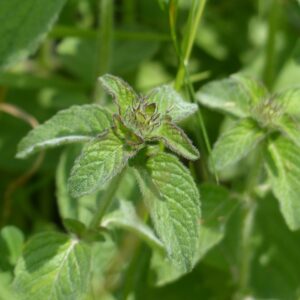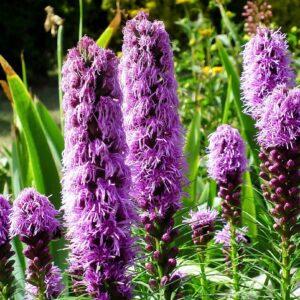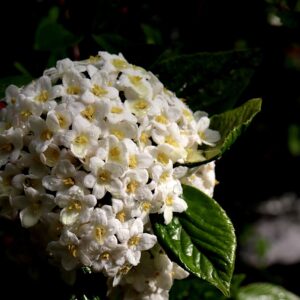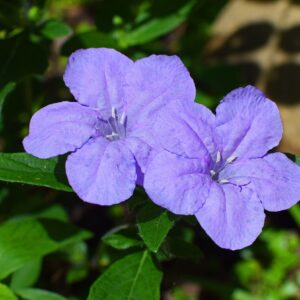Lead Plant (Amorpha canescens) is a perennial shrub native to the prairies and open woodlands of North America. It is known for its distinctive appearance, resilience, and ecological benefits. Overall, Lead Plant is a distinctive and hardy addition to garden settings, offering both beauty and practical benefits, including support for pollinators and adaptability to challenging conditions.
Appearance: Lead Plant is a small, deciduous shrub with a bushy, rounded form. It has a unique appearance due to its feathery foliage and spiky flower spikes.
Height: It typically grows to a height of 2 to 3 feet (60 to 90 cm), with a similar spread.
Leaves: The leaves are pinnate, meaning they are divided into multiple leaflets arranged along a central stalk. Each leaflet is small, lance-shaped, and covered with a soft, grayish or silvery pubescence, giving the plant a distinctive, fuzzy texture. The leaves are typically about 1 to 2 inches long.
Flowers: Lead Plant produces dense, cylindrical spikes of small, pea-like flowers. The flowers are typically purple to violet, although they can sometimes appear bluish or pinkish. Each flower spike can reach up to 4 inches (10 cm) in length.
Blooming Season: The plant blooms from mid to late summer, usually from July to August. The flowering period is relatively short but vibrant.
Habitat: Lead Plant prefers full sun to partial shade and well-drained, sandy to loamy soils. It is commonly found in prairies, open woodlands, and along roadsides. It is highly drought-tolerant and can thrive in poor soils.
Wildlife: Lead Plant attracts various pollinators, including bees and butterflies. Its seeds can also provide food for birds, especially in the fall.
Uses: This plant is valued in native plant gardens, prairie restorations, and naturalized landscapes for its unique appearance and resilience. It is often used in xeriscaping and for erosion control due to its drought tolerance and deep root system.
Cultivation: Lead Plant is relatively low-maintenance. It can be propagated from seeds or cuttings. It benefits from occasional watering, particularly during extended dry periods, but is generally quite tolerant of neglect. Regular pruning after flowering can help maintain its shape and promote a bushier growth habit.





